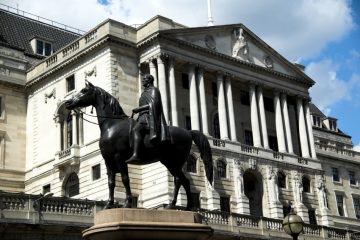How the Help to Buy ISA Will Work
The Conservative Government is supportive of first time buyers and aims to help young people get onto the property ladder.
The Government has two plans to solve the country’s housing crisis:
- Continue making buying and owning a home attractive.
- Build more private homes.
If you buy a new build property under the Government’s Help to Buy scheme, the Government will give you a loan that is free of interest for the first five years, for up to 20% of the value of a home worth up to £600,000 in England.
Details of Help to Buy in Wales can be found here: http://helptobuywales.co.uk/how-it-works/?lang=en.
The Scottish Help to Buy scheme is explained here: http://www.gov.scot/Topics/Built-Environment/Housing/BuyingSelling/help-to-buy.
And Help to Buy in Northern Ireland is detailed here: http://www.nidirect.gov.uk/help-to-buy-mortgage-guarantee-scheme.
This video from the Mortgage Advice Bureau (MAB) explains how Help to Buy works: https://www.mortgageadvicebureau.com/helptobuyscheme.
However, the Government now has a new proposal, the Help to Buy ISA.
Prospective first time buyers can open an account with a building society or bank (it is yet to be announced which will take part) and if they save up to £200 a month, the Government will add to their savings by 25%.
It is believed that savers can use the Government initiative from 1st December 2015. However, it is worth saving now, as hopeful buyers can start off with £1,000.
The Government will provide the additional 25% per month to a maximum of £3,000. However, if two people are planning to buy together, they can have separate ISAs and therefore receive up to £6,000.
The ISA can also be used alongside other schemes such as Help to Buy and shared ownership, as long as it is the buyer’s first home. Therefore, buyers can get a 25% top up to their savings and also receive a loan of up to 20% that is free of interest for five years.
Many first time buyers are told that they must save tens of thousands of pounds, as this is the average deposit of this type of buyer. This is around 25% of the home’s value. However, most lenders will lend at 95% loan-to-value (LTV), so buyers will only need a fifth for a deposit.
If a buyer saves £100 per month for three years using the Government’s Help to Buy ISA, they will save £3,600 plus £900 from the Government. This buyer will have a deposit of £4,500 or £9,000 if they are saving as a couple.
With a £4,500 deposit, a buyer could purchase a house for £90,000. This doubles to £180,000 if there are two buyers.
There are just three regions with an average property price of under £125,000, but there will be one or two-bedroom homes available in these areas for this price.
If a couple saves this amount, they will have enough money for the average priced house in England and Wales, according to the Land Registry.
First time buyers in London typically spend around £300,000 on their first home and outside of London this is £150,000, revealed the Council of Mortgage Lenders (CML).
If saving £100 a month secures just a £4,500 or £9,000 deposit, buyers can still look in expensive areas, where they could use a shared ownership scheme. Homes can be bought in Bristol for £83,000 via shared ownership, £70,000 in Stevenage and £180,000 in London.













